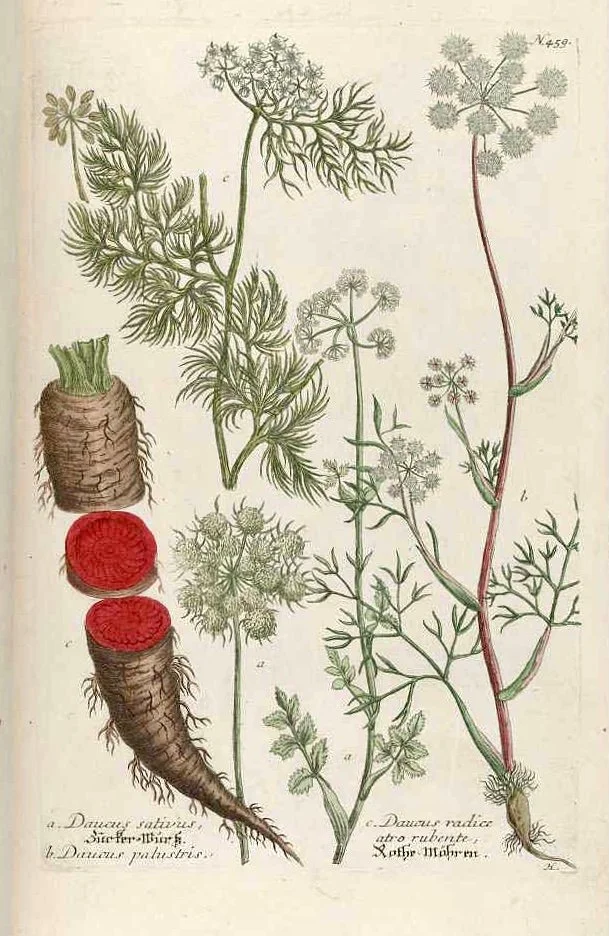Violet Carrot
Violet Carrot
VIOLET CARROT SEEDS
Daucus carota ssp. sativa var. atrorubens
True violet carrots are very nearly entirely purple, with an almost black exterior. It is the “black carrot" of Afghanistan, which is likely the ancestral source of all garden carrots. William Woys Weaver places the origin of these violet carrots in Syria, although it is likely that carrots of all kinds traversed the Silk Road many times over in the ancient past. Muslim immigrants brought their beloved zanahoria morá to the Iberian peninsula in the Middle Ages, and consequently some contemporary seedsfolk list these carrots as “Black Spanish".
Rich in anthocyanins and carotenoids, these carrots were unsurprisingly considered medicinal from at least the Hellenistic through the colonial era in the Americas. In France today these carrots are used primarily for fresh juice, and in Turkey this same juice is fermented to produce şalgam, which crunchy Americans would recognize as a kind of kvass.
The flowers of these unique carrots are often lovely shades of pink and purple. Inferior selections are wont to bolt promptly, and are indeed the source of the popular ‘Dara’ Queen Anne's Lace (which is of course not Queen Anne's Lace). Where carrots can overwinter, the second year will see these plants bloom in spectacular fashion.
Grow these carrots as you would a large juicing carrot. In the Northeast they are best sown in summer for harvest in the autumn, although a spring/summer crop is also possible. Consider amending soils with kelp, azomite and greensand or even regular sand, but avoid nitrogen-rich amendments and fertilizers. Sow sparingly and just barely cover seeds with sifted soil, compost or potting soil. If you are sowing when it is particularly hot and dry, gently place a loose layer of damp grass or straw over sown seeds to help maintain soil moisture as they germinate, but remove once germination begins. Overhead watering with a sprinkler twice daily is highly recommended to hasten germination of seeds. Thin ruthlessly to give these carrots plenty of space, at least 6". Once tops are around 5" inches tall, mulch with grass or straw to help maintain soil moisture and temperature. Water regularly. Harvest in 80 days or so. Fall crops will be sweeter and juicier and hold in the ground for much longer than summer crops. If left for too long in the heat these carrots tend to split.
Though delicious when cooked, the color of these roots washes out to an unappetizing grey. If presentation is important, eat these carrots raw, pickled, or juiced with ginger. Keeps well in a cool cellar or refrigerator. Potential candidate for greenhouse culture over winter, as the resinous flavor becomes very sweet in the cold!
Packet contains around 500 seeds.
